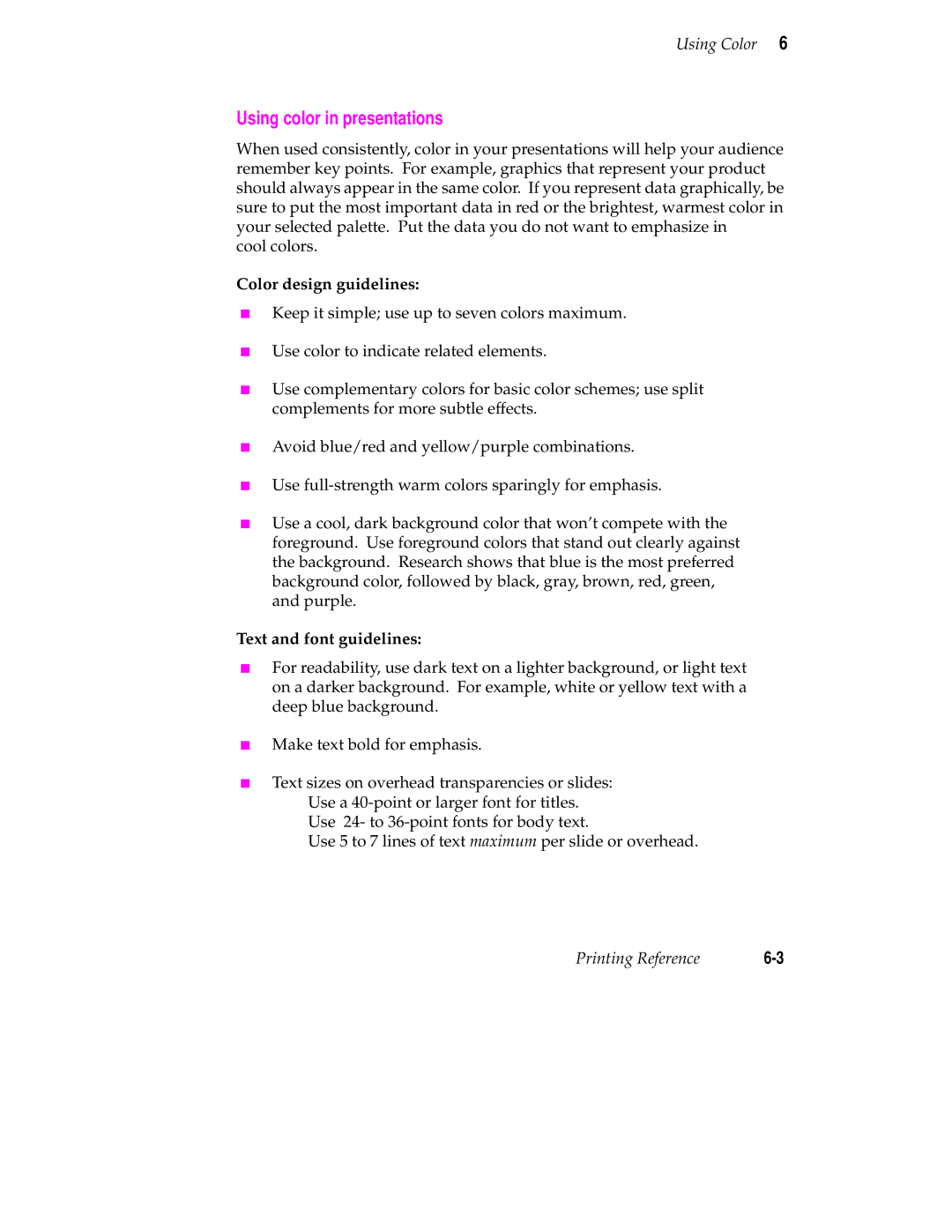Using Color 6
Using color in presentations
When used consistently, color in your presentations will help your audience remember key points. For example, graphics that represent your product should always appear in the same color. If you represent data graphically, be sure to put the most important data in red or the brightest, warmest color in your selected palette. Put the data you do not want to emphasize in
cool colors.
Color design guidelines:
■Keep it simple; use up to seven colors maximum.
■Use color to indicate related elements.
■Use complementary colors for basic color schemes; use split complements for more subtle effects.
■Avoid blue/red and yellow/purple combinations.
■Use
■Use a cool, dark background color that won’t compete with the foreground. Use foreground colors that stand out clearly against the background. Research shows that blue is the most preferred background color, followed by black, gray, brown, red, green, and purple.
Text and font guidelines:
■For readability, use dark text on a lighter background, or light text on a darker background. For example, white or yellow text with a deep blue background.
■Make text bold for emphasis.
■Text sizes on overhead transparencies or slides:
Use a
Use 24- to
Use 5 to 7 lines of text maximum per slide or overhead.
Printing Reference |
